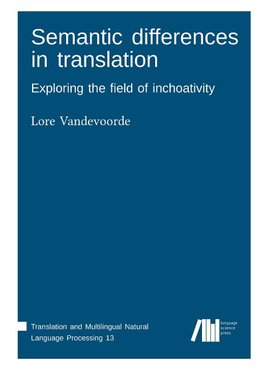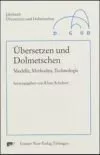
-
 Anglický jazyk
Anglický jazyk
Semantic differences in translation
Autor: Lore Vandevoorde
Although the notion of meaning has always been at the core of translation, the invariance of meaning has, partly due to practical constraints, rarely been challenged in Corpus-based Translation Studies. In answer to this, the aim of this book is to question... Viac o knihe
Na objednávku
37.08 €
bežná cena: 41.20 €
O knihe
Although the notion of meaning has always been at the core of translation, the invariance of meaning has, partly due to practical constraints, rarely been challenged in Corpus-based Translation Studies. In answer to this, the aim of this book is to question the invariance of meaning in translated texts: if translation scholars agree on the fact that translated language is different from non-translated language with respect to a number of grammatical and lexical aspects, would it be possible to identify differences between translated and non-translated language on the semantic level too? More specifically, this books tries to formulate an answer to the following three questions: (i) how can semantic differences in translated vs non-translated language be investigated in a corpus-based study?, (ii) are there any differences on the semantic level between translated and non-translated language? and (iii) if there are differences on the semantic level, can we ascribe them to any of the (universal) tendencies of translation? In this book, I establish a way to visually explore semantic similarity on the basis of representations of translated and non-translated semantic fields. A technique for the comparison of semantic fields of translated and non-translated language called SMM++ (based on Helge Dyvik's Semantic Mirrors method) is developed, yielding statistics-based visualizations of semantic fields. The SMM++ is presented via the case of inchoativity in Dutch (beginnen [to begin]). By comparing the visualizations of the semantic fields on different levels (translated Dutch with French as a source language, with English as a source language and non-translated Dutch) I further explore whether the differences between translated and non-translated fields of inchoativity in Dutch can be linked to any of the well-known universals of translation. The main results of this study are explained on the basis of two cognitively inspired frameworks: Halverson's Gravitational Pull Hypothesis and Paradis' neurolinguistic theory of bilingualism.
- Vydavateľstvo: Language Science Press
- Rok vydania: 2020
- Formát: Hardback
- Rozmer: 246 x 175 mm
- Jazyk: Anglický jazyk
- ISBN: 9783961100736



 Ruský jazyk
Ruský jazyk 






 Nemecký jazyk
Nemecký jazyk 